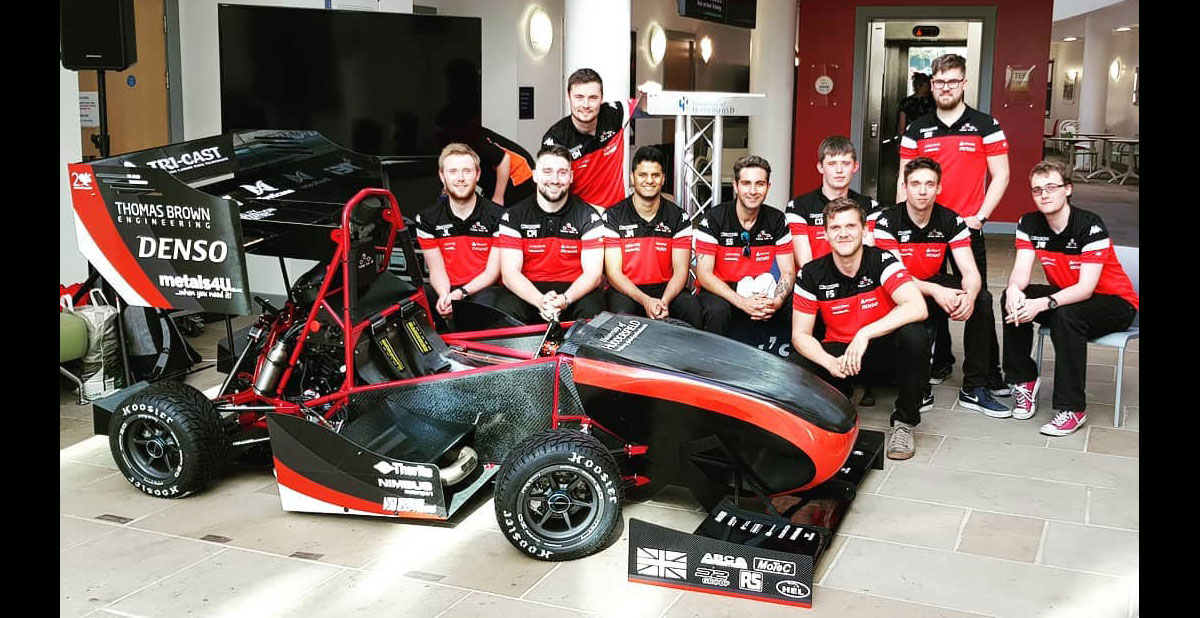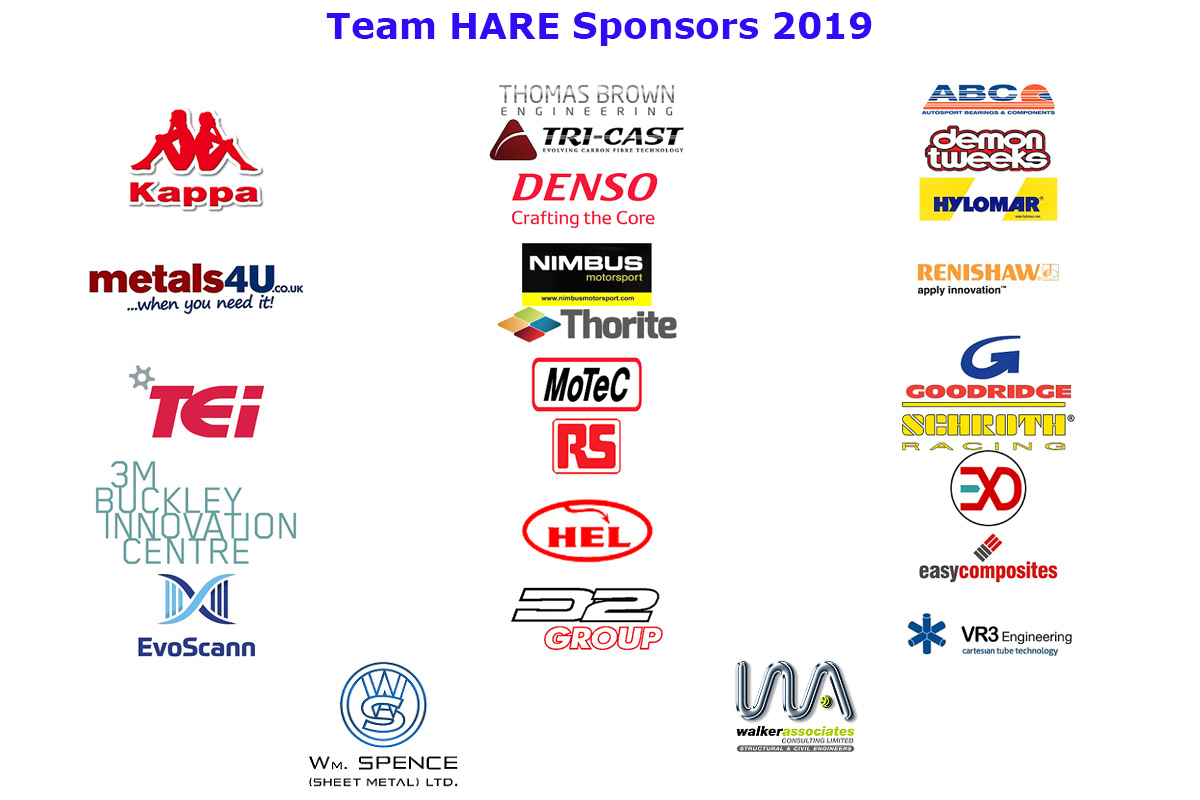The University’s Team HARE were 6th overall and 3rd amongst UK team
THE Formula Student racing car designed, built and driven by engineering students at the University of Huddersfield has just had one of its most successful seasons. Now, the baton is to be passed to a new group who will form the University’s Team HARE for the 2019-2020 round of the global Formula Student contest.
Every year, Team HARE – consisting of final-year Master of Engineering (MEng) students – takes on the challenge of redesigning, rebuilding and upgrading the car and aiming for competition success. In 2019, the Huddersfield team of 13 students took their high-powered vehicle to Silverstone in the UK, where it came in at sixth place out of an entry of 80 cars.
Then it was on to the Most Autodrome in the Czech Republic, where Team HARE scored a creditable 11th place. It was one of the best performances for several years, said John Baron, the engineering lecturer who has supervised Huddersfield’s Formula Student team since the University started to compete 19 years ago.
This year we had a really good team that took a massive step forward.”
John Baron, Supervisor of Huddersfield's Formula Student Team
Final-year MEng students at Huddersfield must undertake a group project, and joining Team HARE is one of the options on offer. The rules of the Formula Student contest – run by the Institution of Mechanical Engineers – are that a new chassis has to be designed and built every year. Other components of the car can be recycled, but there have been many redesigns and technological innovations over the years, said Mr Baron.
“This year’s team took a massive step forward. For example, body panels used to be aluminium, now they are a carbon composite.”
Students are formed into sub-groups that work on different aspects of the car, and there are four who are selected as drivers. In building the vehicle, Team HARE has back-up from the University’s own technicians and there are fruitful partnerships with specialist firms that have bases in the region, such as Huddersfield’s Thomas Brown Engineering and the multi-national Denso.
The car that results is light and powerful at 230kg with 100 brake horsepower. It can hit 60 mph in 3.5 seconds. At Formula Student competitions, there is a wide range of timed tests that include an endurance round. At Silverstone, this was 22 laps of the circuit, with an enforced stop, restart and driver change at the midway point.
The team also faces the challenge of ensuring that the car passes the stiff scrutineering process, designed to ensure that the car is safe and complies with the rules.
Students who join Team HARE have their general engineering skills burnished, but several have gone on to careers within Formula One, said Mr Baron.
This year, Ollie Milner – who has now graduated with a Distinction in his MEng – was awarded a coveted scholarship to spend six months at the engineering academy Infinity and then another half year with the Renault F1 team that it sponsors.
Mr Baron’s role with the team is that of Faculty Advisor, and the members of Team HARE are awarded marks for their contribution that play a big role in their degree classification.
“The academics have an overview, to make sure they don’t spend too much money and to make sure everything is safe. But apart from that, it is the students’ car. They design everything.”
More Stories
KTP Best of the Best Award for engineer
Knowledge Transfer Partnership Associate Sean Howson developed a new flow measurement system with Mainstream Measurements Ltd
Eng student’s Santander Universities scholarship
Nikita Brown is one of the first recipients of the Santander Universities new Women in Engineering Programme and STEMships initiative
Student KTP helps cyber security firm
Sathpal Panesar is completing a two-year Knowledge Transfer Partnership to combat when and why people engage with phishing emails


